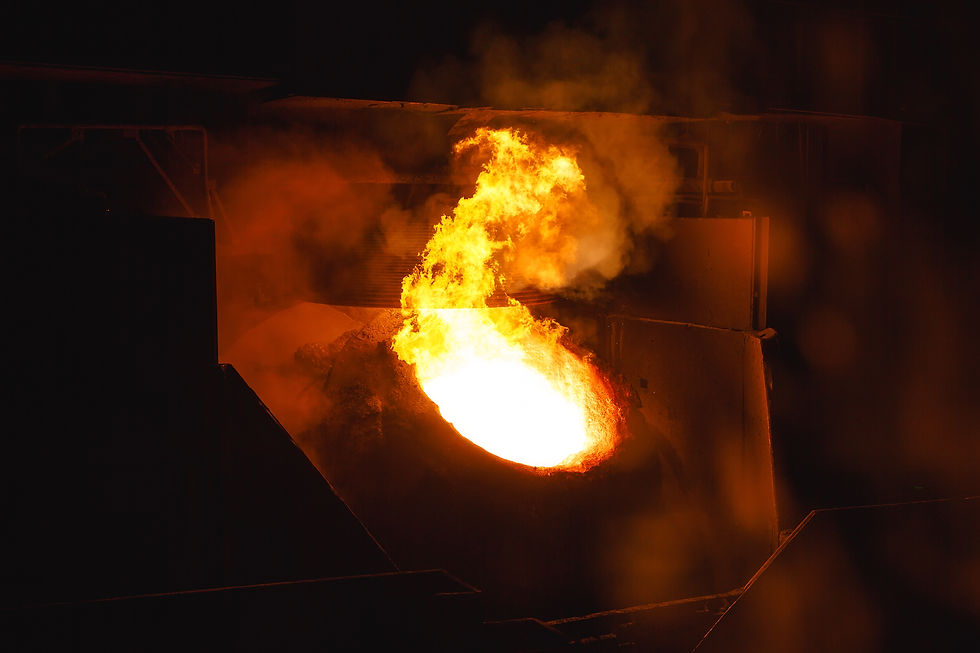How is Stainless Steel Made: The Steel Series III
- Ahmed Salih
- Dec 21, 2020
- 2 min read

Stainless steel is made of iron alloy with Chromium as the main alloying element, which ranges between 12-20 percent. Other alloying elements include Carbon, Nickel, Manganese, and Copper. As we mentioned in our previous article, stainless steel is used in cookware, surgical instruments, chemical and food storage tanks and industrial buildings among many other applications. The main categories of stainless steels are austenitic, ferritic, martensitic, duplex and precipitation-hardening.
Stainless Steel Properties
The main characteristics of stainless steel is its high corrosion resistance. Moreover, it can be used at a wide range of temperatures and improved strength. This high resistance to corrosion works when chromium forms a passive layer that protects the metal from oxidizing.
How is Stainless Steel Made? The Process
Raw material: you have your iron, carbon, chromium and other alloying elements depending on the final product specifications. For example, adding molybdenum will provide better resistance to pitting corrosion by increasing its PREN.
Manufacturing: this includes the following steps
Melting: raw materials are melted in an electric furnace. Generally, this process takes between 8-12 hours depending on the heat.
Removal of excess carbon: this can be achieved using Argon Oxygen Decarburization (AOD) which have three main refining steps, decarburization, reduction and desulfurization. Another method is Vacuum Oxygen Decarburization (VOD), which is used to achieve lower carbon content.
Tuning: in this step, the elements' composition is altered to match the specifications. This step can be considered as quality control to ensure a final matching composition.
Forming: the molten metal is cast into forms as blooms, billets, slabs or rods.
Hot Rolling: the cast steel passed through hot rolls whose temperature depends on the final steel grade. This rolling will form blooms and billets into bars and wires. As for slabs, they are formed into plates, strips or sheets.
Cold Rolling: unlike hot rolling, cold rolling happens at temperatures below the recrystallization temperature of the steel and used when specific finishes are required.
Annealing: here the steel is reheated and cooled down to relieve the internal stress incurred by the previous processes. This also increases the ductility and soften the stainless steel. The amount of heat depends on the steel type. For examples, austenitics are heated up to 1037 degrees Celsius.
Descaling: the annealing process results in scales forming on the steel. Using nitric-hydrofluoric acid bath or electrocleaning where an electric current flows through the steel surface, will remove the formed scales
Cutting: stainless steel is then cut into its final size. Here different methods are utilized such as mechanical cutting, flame cutting or plasma jet cutting.
Finishing: stainless steel appearance matter due to its applications. Thus, the use of grinding wheels, abrasive belts, sandblasting or wet etching can help in achieving a smooth finish on the final product.
Summary
In this article, we discussed the main steps in making stainless steel and its properties. You can check our articles here.
CERM-EX is Turkey’s market-leading structural steel company, the home of world-class engineering and design excellence. Feel free to check Our Services or Contact Us to see where can we help you in your next project.









Comments